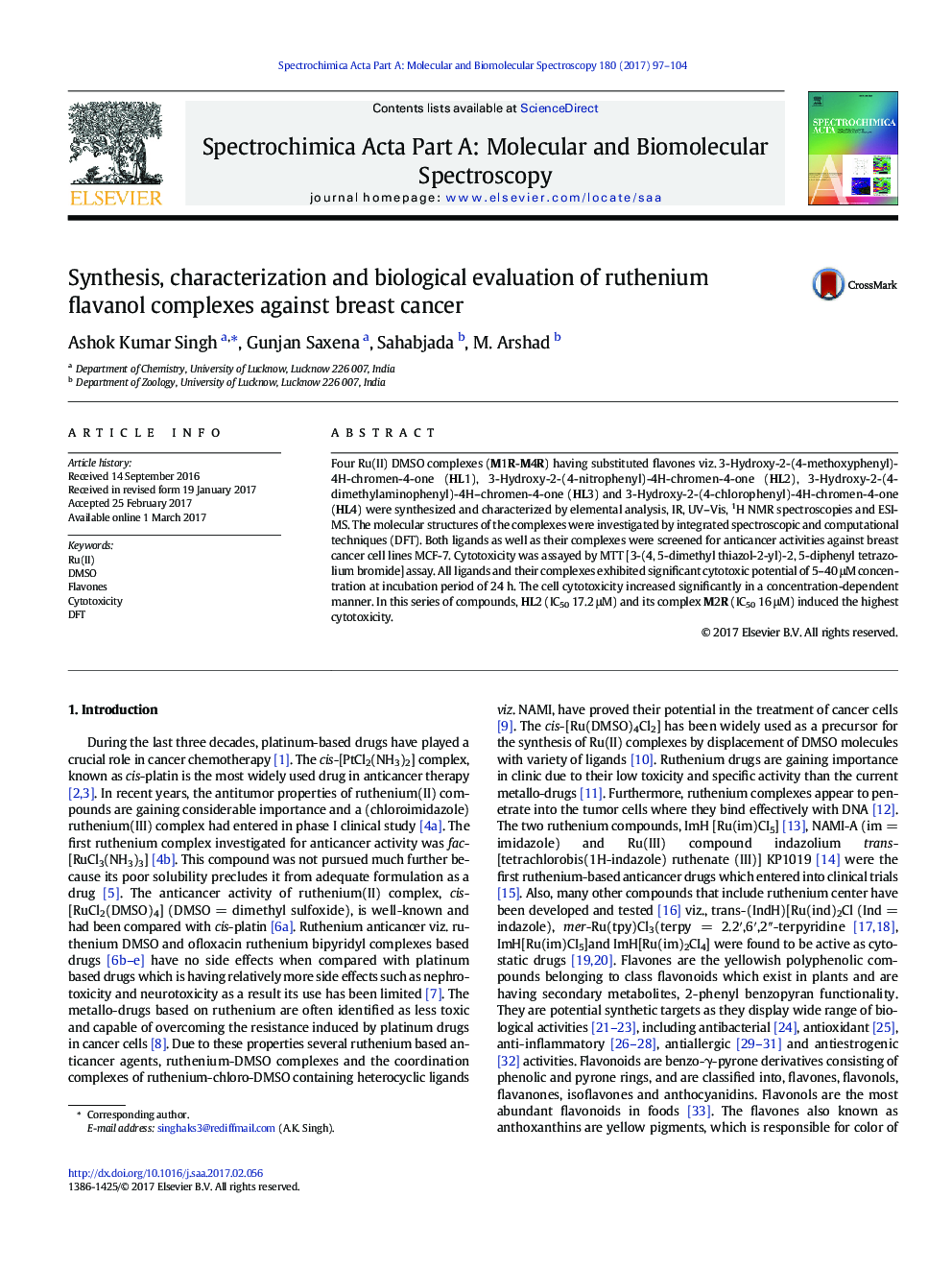| Article ID | Journal | Published Year | Pages | File Type |
|---|---|---|---|---|
| 5139588 | Spectrochimica Acta Part A: Molecular and Biomolecular Spectroscopy | 2017 | 8 Pages |
â¢Ru(II)-DMSO flavonol complexes synthesized.â¢The complexes were characterized using integrated physico-chemical technique.â¢The complexes were tested against breast cancer cell lines.
Four Ru(II) DMSO complexes (M1R-M4R) having substituted flavones viz. 3-Hydroxy-2-(4-methoxyphenyl)-4H-chromen-4-one (HL1), 3-Hydroxy-2-(4-nitrophenyl)-4H-chromen-4-one (HL2), 3-Hydroxy-2-(4-dimethylaminophenyl)-4H-chromen-4-one (HL3) and 3-Hydroxy-2-(4-chlorophenyl)-4H-chromen-4-one (HL4) were synthesized and characterized by elemental analysis, IR, UV-Vis, 1H NMR spectroscopies and ESI-MS. The molecular structures of the complexes were investigated by integrated spectroscopic and computational techniques (DFT). Both ligands as well as their complexes were screened for anticancer activities against breast cancer cell lines MCF-7. Cytotoxicity was assayed by MTT [3-(4, 5-dimethyl thiazol-2-yl)-2, 5-diphenyl tetrazolium bromide] assay. All ligands and their complexes exhibited significant cytotoxic potential of 5-40 μM concentration at incubation period of 24 h. The cell cytotoxicity increased significantly in a concentration-dependent manner. In this series of compounds, HL2 (IC50 17.2 μM) and its complex M2R (IC50 16 μM) induced the highest cytotoxicity.
Graphical AbstractThe Ru(II)-DMSO complexes containing different 4-substituted 3-hydroxy flavones synthesized which showed significant activity against breast cancer cell line, MCF-7.Download high-res image (208KB)Download full-size image
